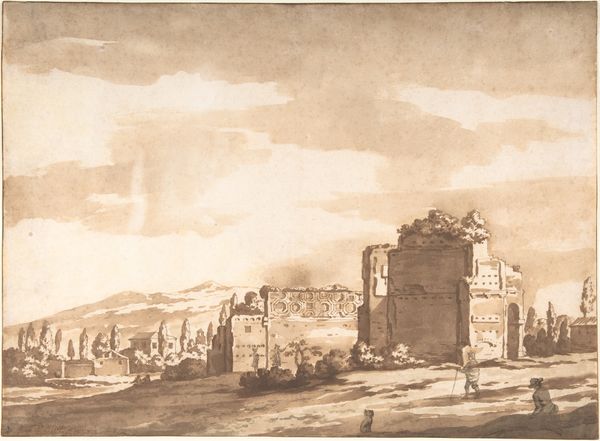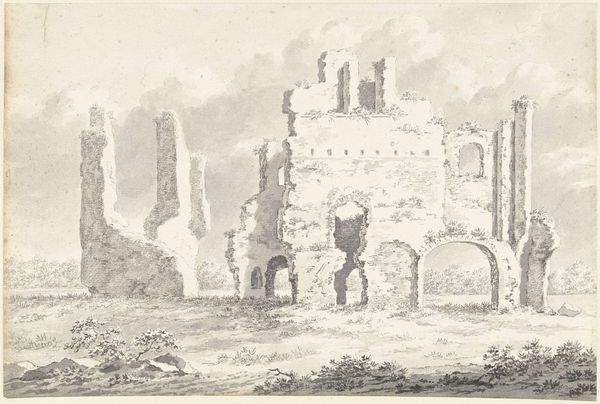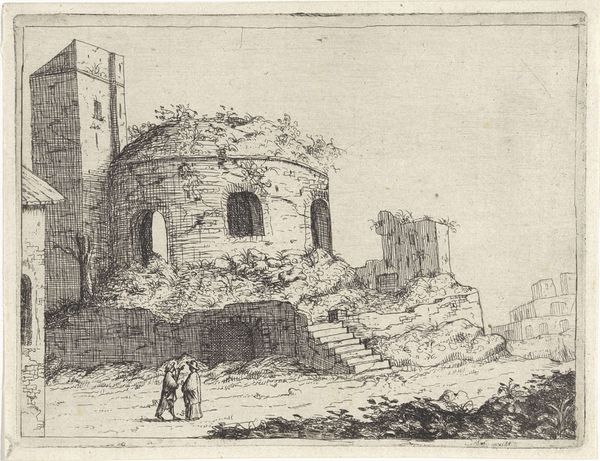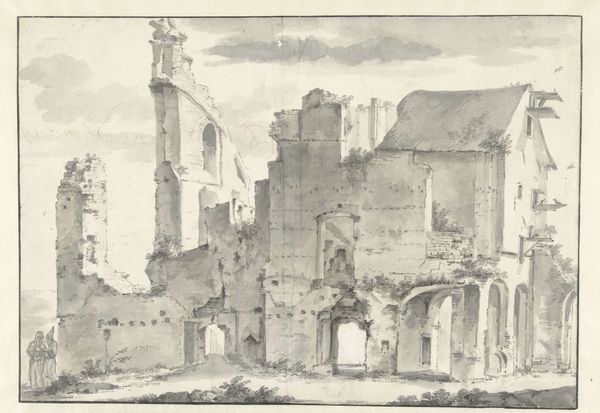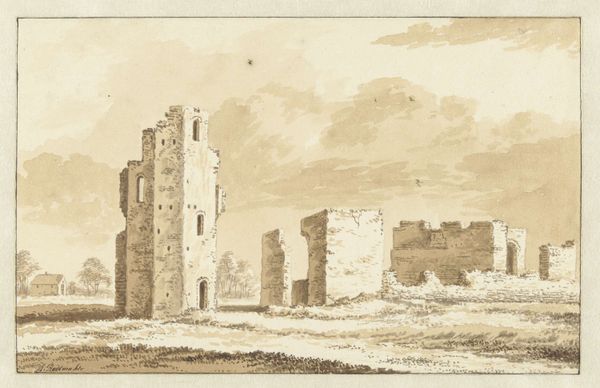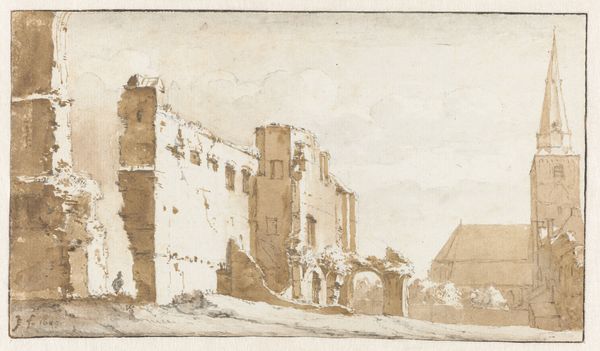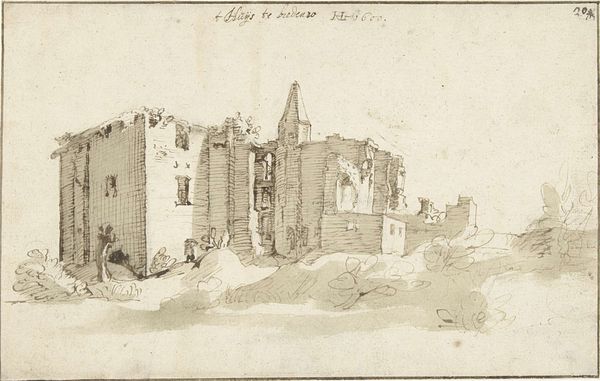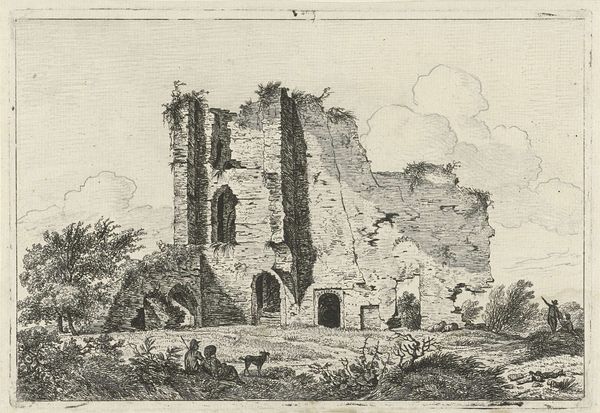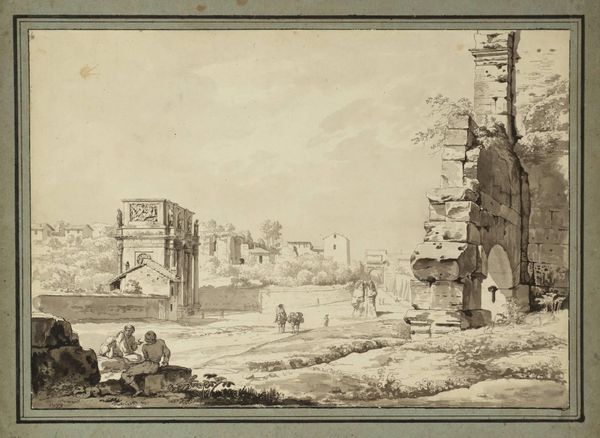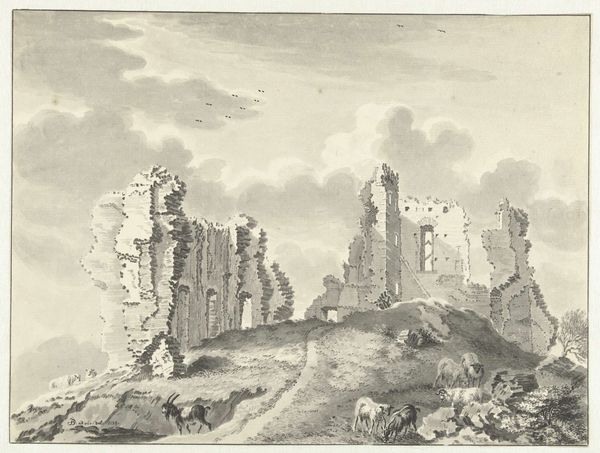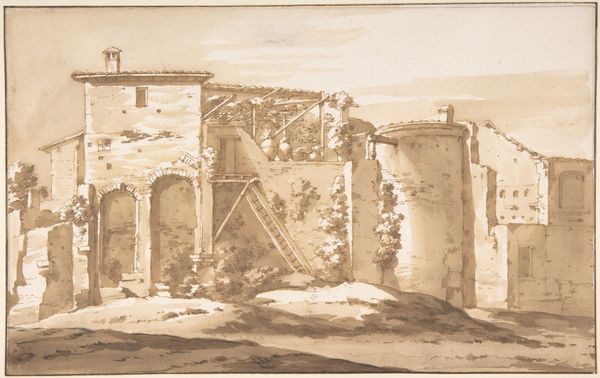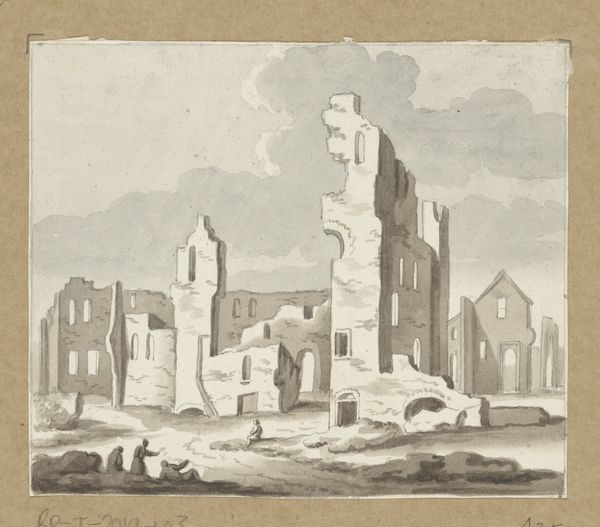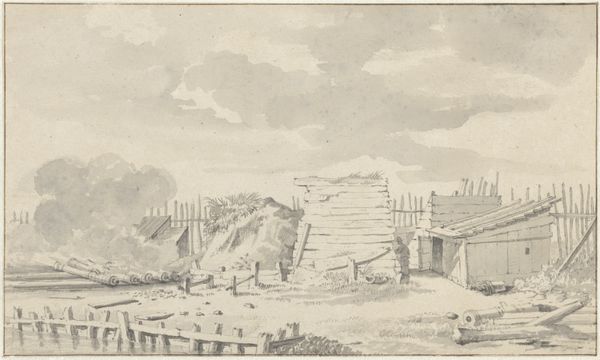
drawing, pencil, architecture
#
drawing
#
baroque
#
pencil sketch
#
landscape
#
pencil
#
architecture
Dimensions: height 138 mm, width 196 mm
Copyright: Rijks Museum: Open Domain
Editor: This pencil drawing, "Ruïne van kasteel Brederode" by Abraham de Haen II, created sometime between 1717 and 1748, has such a melancholic atmosphere. The ruined castle dominates the scene, but life continues with the small figures in the foreground. What echoes do you hear when you look at this piece? Curator: It is remarkable how ruins, like the Brederode castle here, become potent symbols of time, loss, and the transience of human endeavor. The castle, once a symbol of power, is now being reclaimed by nature, depicted here in stark, barren lines. How do you think de Haen uses this contrast between the imposing architecture and the mundane, everyday life continuing at its base? Editor: I hadn't considered the contrast like that! The tiny figures really underscore how far removed we are from the castle’s former glory. There’s this sense of humanity moving on despite history crumbling. It makes me wonder if the drawing's message is more about resilience than decay. Curator: Precisely! Ruins are often seen as emblems of decline, but they also evoke a kind of cultural memory. De Haen’s detailed rendering encourages a meditation on the layered narratives within the landscape. Does the inclusion of everyday life give you a different sense of how history can carry cultural continuity through its iconography? Editor: It does. It’s as if he’s saying that even in ruin, history is a living, breathing part of the present. Thanks, I never would have thought to see resilience in a ruined building, but I understand it now! Curator: And I never would have thought about cultural continuity so clearly without your observation on the figures and architecture! This exploration encourages us to look closer at how images embed cultural meanings in unexpected ways.
Comments
No comments
Be the first to comment and join the conversation on the ultimate creative platform.
